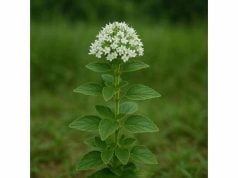
Tamarillo, also known as the tree tomato, is a nutrient-dense fruit celebrated for its diverse health benefits and distinctive medicinal properties. Rich in vitamins, antioxidants, and bioactive compounds, this exotic fruit offers support for cardiovascular health, immune function, and digestion. Traditional medicine has long embraced tamarillo for its anti-inflammatory and anticancer potential, while modern research underscores its role in fighting oxidative stress and promoting cellular health. Whether consumed fresh, juiced, or used in supplements and culinary creations, tamarillo provides an array of benefits, making it a versatile and valuable component in natural healing regimens.
Table of Contents
- Botanical Profile and Identification
- Phytochemistry and Active Compounds
- Health Benefits and Essential Qualities
- Practical Uses and Safety Considerations
- Research Insights and Key Findings
- Frequently Asked Questions
Botanical Profile and Identification
Tamarillo (Solanum betaceum), commonly referred to as the tree tomato, belongs to the Solanaceae family. Native to the Andean regions of South America, it has expanded its cultivation across tropical and subtropical regions worldwide due to its ease of growth and nutritional appeal. The tamarillo plant is a small, bushy tree that typically reaches heights of 3–8 meters. It produces oval-shaped, leathery leaves with a deep green hue and an intricate venation pattern. The tree’s vibrant, bell-shaped flowers range in color from white to light purple, providing an ornamental appeal before giving way to its edible fruit.
The fruit of the tamarillo is egg-shaped to oval with a smooth, thin skin that can be red, orange, or yellow, depending on the variety. Beneath this colorful skin lies a juicy, tangy pulp dotted with small, edible seeds that contribute to its unique flavor profile—a sweet-tart balance that has captivated gourmets and nutritionists alike. The fruit’s texture is firm yet succulent, making it ideal for both raw consumption and cooking. Its aroma is a blend of floral and tropical notes, a sensory indicator of its complex phytochemical makeup.
Tamarillo trees thrive in climates with moderate temperatures and ample sunlight. They prefer well-drained, sandy loam soils and benefit from regular irrigation, although they exhibit some drought tolerance once established. The plant is sensitive to frost, which restricts its cultivation to regions where cold snaps are infrequent. Its capacity to adapt to different soil types and environmental conditions has led to widespread cultivation across New Zealand, Australia, and various parts of South America.
Historically, indigenous cultures in the Andean highlands utilized tamarillo not only as a staple food but also for its medicinal properties. Local communities incorporated the fruit into their diets to enhance energy levels, improve digestion, and support overall vitality. Over time, the tamarillo has garnered international acclaim for its exotic flavor and high nutrient density. Traditional agricultural practices, such as intercropping with other native plants, have been employed to optimize its growth and ensure a sustainable yield while preserving the ecological balance.
In modern agronomy, tamarillo is often propagated through seed germination or cutting. Researchers have noted that controlled propagation methods enhance the fruit’s uniformity and quality, making it more appealing for commercial production. The plant’s growth cycle, which spans several months from flowering to fruiting, requires careful management of water and nutrient supply, and its susceptibility to certain pests and diseases necessitates a balanced approach to crop protection—preferably with organic or eco-friendly practices.
The botanical study of tamarillo also extends to its genetic diversity. Varieties of tamarillo differ in taste, color, and size, reflecting the influence of local environmental conditions and cultivation techniques. Breeders and horticulturists are increasingly interested in these differences, as they provide opportunities for selecting superior cultivars with enhanced nutritional and therapeutic properties. Furthermore, genetic research into tamarillo is uncovering the molecular mechanisms behind its resistance to certain pathogens and its efficient use of resources—a knowledge base that could lead to more resilient crops in the future.
Beyond its food value, tamarillo contributes significantly to local ecosystems. Its dense canopy provides shelter and forage for various bird and insect species, enhancing biodiversity in cultivated areas. The plant’s deep root system plays a pivotal role in preventing soil erosion, thereby maintaining the integrity of the environment in which it grows. These ecological functions underscore the importance of tamarillo not only as a food source but also as a component of sustainable agriculture.
In summary, the botanical profile and identification of tamarillo reveal a plant of remarkable resilience, diversity, and ecological value. Its distinctive morphology, ranging from the bright, flavorful fruit to its lush, green foliage, has made it an asset in both traditional culinary practices and modern horticulture. With its adaptable growth habits and rich cultural heritage, tamarillo stands out as a truly exceptional fruit with significant nutritional and therapeutic potential.
Phytochemistry and Active Compounds
The impressive medicinal and nutritional properties of tamarillo are deeply rooted in its complex phytochemical composition. Modern analytical techniques have allowed researchers to isolate and quantify a host of bioactive compounds that play significant roles in the fruit’s flavor, aroma, and health benefits. In this section, we explore the key active constituents found in tamarillo and discuss their contributions to its overall therapeutic profile.
- Anthocyanins:
Tamarillo is rich in anthocyanins, which are pigments responsible for its vibrant red, purple, or orange hues. These compounds not only contribute to the fruit’s appealing color but also exhibit potent antioxidant properties. By scavenging free radicals, anthocyanins help protect cells from oxidative stress, thereby reducing inflammation and lowering the risk of chronic diseases such as cardiovascular disorders and cancer. - Carotenoids:
Present in varying concentrations depending on the tamarillo variety, carotenoids such as beta-carotene serve as precursors to vitamin A. These compounds are essential for maintaining healthy vision, skin, and immune function. Their antioxidant activities further enhance the fruit’s ability to counteract the damaging effects of reactive oxygen species. - Vitamin C and Other Antioxidants:
Tamarillo provides a significant amount of vitamin C, an essential nutrient known for its immune-boosting and collagen-synthesizing properties. Alongside vitamin C, the fruit contains other antioxidants, including vitamin E and various polyphenols. These antioxidants work synergistically to neutralize free radicals, reducing oxidative stress and supporting cellular repair processes. - Flavonoids:
Various flavonoids, such as quercetin and kaempferol, have been identified in tamarillo. These compounds exhibit anti-inflammatory, antiviral, and antimicrobial properties, making them crucial for promoting overall health. Flavonoids also contribute to the modulation of enzyme activity and hormone regulation within the body. - Phenolic Acids:
Tamarillo contains a range of phenolic acids, including caffeic, ferulic, and chlorogenic acids. These bioactive molecules are known for their anti-inflammatory and antioxidant effects. They enhance the body’s ability to combat oxidative stress and can support cardiovascular health by helping to maintain the elasticity of blood vessels. - Dietary Fiber:
In addition to its phytochemical content, tamarillo is high in dietary fiber, which is essential for maintaining a healthy digestive system. The fiber content aids in regulating bowel movements, stabilizing blood sugar levels, and supporting a balanced gut microbiota. Both soluble and insoluble fibers in tamarillo help promote satiety and assist in weight management. - Organic Acids:
Organic acids such as citric and malic acid contribute to the tangy flavor profile of tamarillo. These acids not only enhance the sensory experience of the fruit but also play a role in mineral absorption and metabolic processes. They can help balance the body’s pH, supporting overall metabolic health. - Essential Oils:
Although present in trace amounts, the essential oils in tamarillo contribute to its unique aroma. These volatile compounds, including limonene and pinene, have been noted for their anti-inflammatory and antimicrobial properties, enhancing both the therapeutic and sensory qualities of the fruit.
The rich tapestry of phytochemicals in tamarillo is what gives it its multifunctional properties. The interaction between antioxidants, vitamins, flavonoids, and dietary fiber creates a robust system for fighting oxidative stress, reducing inflammation, and supporting immune function. This comprehensive phytochemical profile not only makes tamarillo a highly nutritious fruit but also underpins its longstanding use in traditional medicine.
Modern extraction and analytical techniques have helped in the standardization of tamarillo extracts, ensuring consistency in its therapeutic applications. Researchers employ methods such as high-performance liquid chromatography (HPLC) and mass spectrometry to precisely identify and quantify these compounds. The ability to reproduce the unique phytochemical profiles of tamarillo is essential for both clinical research and the development of dietary supplements and functional foods.
It is noteworthy that the specific composition of tamarillo can vary depending on factors such as cultivar, growing conditions, and ripeness at harvest. Such variations may influence the concentrations of bioactive compounds, thereby affecting the fruit’s flavor profile and medicinal potency. Therefore, ongoing research and refinement of cultivation practices are critical to optimize both yield and quality.
In summary, tamarillo’s phytochemistry is a rich mosaic of antioxidants, vitamins, flavonoids, and dietary fibers that collectively contribute to its health-promoting properties. Each of these active compounds plays a distinct yet complementary role in enhancing the fruit’s nutritional value and therapeutic efficacy. This intricate chemical composition not only supports traditional uses but also provides a solid foundation for its application in modern medicine and nutrition.
Health Benefits and Essential Qualities
Tamarillo offers a wide array of health benefits, making it a powerful functional food with profound therapeutic properties. This section explores the key advantages and essential qualities of tamarillo that support overall well-being and illustrate its role in both traditional and modern health practices.
Antioxidant Protection and Cellular Health
One of the most significant benefits of tamarillo is its exceptional antioxidant capacity. Rich in anthocyanins, carotenoids, and vitamin C, the fruit effectively neutralizes free radicals, minimizing oxidative stress and protecting cells from damage. This cellular defense is vital in preventing premature aging and reducing the risk of chronic diseases such as heart disease, cancer, and neurodegenerative disorders. Regular consumption of tamarillo may help maintain the integrity of cells and tissues, thereby enhancing overall vitality.
Anti-Inflammatory Effects
Chronic inflammation is a common denominator in many serious health conditions. The bioactive compounds in tamarillo, including flavonoids and phenolic acids, possess potent anti-inflammatory properties. By inhibiting inflammatory pathways and reducing the production of pro-inflammatory cytokines, tamarillo helps to alleviate symptoms of inflammatory conditions such as arthritis, inflammatory bowel diseases, and skin disorders. This anti-inflammatory action plays a critical role in promoting long-term health and preventing tissue damage.
Cardiovascular Health
The combination of antioxidants, dietary fiber, and essential vitamins in tamarillo contributes significantly to cardiovascular well-being. The fruit helps lower blood pressure, regulate cholesterol levels, and improve overall arterial function. The presence of potassium works synergistically with other nutrients to support healthy heart rhythms and maintain fluid balance in the body. By reducing oxidative stress and inflammation, tamarillo helps protect against the development of atherosclerosis and other cardiovascular diseases.
Digestive Health and Gut Function
Tamarillo is an excellent source of dietary fiber, which is crucial for maintaining a healthy digestive system. The soluble and insoluble fibers in the fruit aid in regulating bowel movements, enhancing nutrient absorption, and fostering the growth of beneficial gut bacteria. A balanced gut microbiome is essential not only for digestion but also for supporting the immune system and overall metabolic health. Regular consumption of tamarillo contributes to improved gastrointestinal function and can help prevent issues such as constipation and bloating.
Immune System Support
The high concentration of vitamin C and other antioxidants in tamarillo plays a pivotal role in bolstering the immune system. By protecting immune cells from oxidative damage and enhancing their functionality, tamarillo supports the body’s natural defenses against pathogens. This immunomodulatory effect helps reduce the incidence of infections and contributes to a robust overall immune response.
Skin Health and Anti-Aging
Tamarillo’s rich supply of vitamins, particularly vitamin C, and antioxidants is beneficial for maintaining youthful, radiant skin. Vitamin C promotes collagen synthesis, which is essential for skin elasticity and firmness. The fruit’s antioxidant properties help protect the skin from environmental damage, UV radiation, and pollution, thereby reducing the appearance of fine lines and wrinkles. Incorporating tamarillo into the diet or applying extracts topically can support skin rejuvenation and enhance overall complexion.
Energy and Metabolic Balance
As a nutrient-dense food, tamarillo provides a steady release of energy, thanks to its balance of natural sugars and dietary fiber. This slow-release energy source helps stabilize blood sugar levels, reducing spikes and crashes that often lead to fatigue. Moreover, the combination of antioxidants and vitamins supports metabolic processes, improving energy utilization and overall stamina. This makes tamarillo a great addition to the diet for individuals seeking sustained energy and improved metabolic health.
Holistic Wellness
Tamarillo’s multifaceted benefits extend to overall well-being and quality of life. Beyond its physical health advantages, the consumption of tamarillo has been associated with improved mood and cognitive function, likely due to its ability to reduce inflammation and oxidative stress in the brain. Its balanced nutritional profile supports not only physical health but also mental and emotional stability, making it a versatile component of a holistic wellness regimen.
In conclusion, the health benefits and essential qualities of tamarillo highlight its remarkable ability to support various aspects of human health. From powerful antioxidant protection and anti-inflammatory effects to cardiovascular, digestive, and skin health, tamarillo offers a comprehensive package that can enhance overall well-being. Its integration into both traditional diets and modern functional foods exemplifies its versatility and enduring value as a natural remedy for promoting long-term health.
Practical Uses and Safety Considerations
Tamarillo’s versatility lends itself to a wide range of practical applications in culinary, medicinal, and cosmetic domains. However, to maximize its benefits and ensure safety, it is important to understand proper usage guidelines, dosage recommendations, and potential side effects.
Culinary Applications
Tamarillo can be enjoyed fresh, juiced, or cooked, making it a popular ingredient in a variety of dishes. Its tangy, slightly sweet flavor adds a unique twist to salads, salsas, desserts, and sauces. In many tropical cuisines, tamarillo is used to create vibrant chutneys and relishes that complement both meat and vegetarian dishes. Additionally, tamarillo puree can be incorporated into smoothies, baked goods, or even transformed into a tangy vinegar for salad dressings. The fruit’s versatility in the kitchen not only enhances flavor but also delivers a wealth of nutritional benefits.
Medicinal and Nutraceutical Uses
Given its rich nutritional profile and bioactive compounds, tamarillo is increasingly utilized in natural medicine and nutraceutical formulations. The fruit extract is often available as a dietary supplement in capsule or powder form, targeted towards promoting cardiovascular health, boosting immune function, and enhancing digestion. These supplements are standardized to ensure consistent levels of antioxidants and vitamins, enabling consumers to gain the full therapeutic benefits of tamarillo. In traditional medicine, tamarillo is used to support metabolic balance and detoxification processes, making it a valuable addition to holistic health regimens.
Cosmetic and Skincare Applications
The antioxidants and vitamins present in tamarillo make it an excellent ingredient for skincare products. Extracts of tamarillo are incorporated into creams, serums, and masks designed to brighten the skin, reduce signs of aging, and promote a more even complexion. The fruit’s ability to stimulate collagen production and protect against environmental stressors makes it ideal for anti-aging formulations. When applied topically, tamarillo extracts help soothe inflammation and improve skin texture, offering a natural remedy for various dermatological conditions such as acne and hyperpigmentation.
Dosage Guidelines and Administration
For culinary use, tamarillo can be integrated into daily meals with no specific restrictions, though moderation is recommended to maintain a balanced diet. For oral supplements, typical dosages range from 500 mg to 1,000 mg per day, though it is advisable to follow the manufacturer’s recommendations or consult a healthcare professional for personalized advice. Topical formulations containing tamarillo extract should be applied according to product instructions. A patch test is recommended for individuals with sensitive skin to avoid potential allergic reactions.
Safety Considerations
While tamarillo is generally safe for most individuals, a few safety precautions should be observed:
- Allergic Reactions: Although rare, some individuals may experience allergic reactions to tamarillo, particularly if they have sensitivities to other members of the Solanaceae family. A small patch test is advisable before extensive use.
- Digestive Sensitivity: In rare cases, the high fiber content may cause mild digestive discomfort such as bloating or gas. Introducing tamarillo gradually into the diet can help mitigate these effects.
- Interactions with Medications: As with any supplement, individuals taking prescription medications or with underlying health conditions should consult a healthcare provider before starting new tamarillo-based products, to avoid potential interactions.
- Quality Assurance: It is crucial to use tamarillo products from reputable sources that ensure high quality and standardization of active compounds. Avoid products with synthetic additives or adulterants that may diminish the fruit’s natural benefits.
Best Practices for Integration
- Diverse Consumption: Incorporate tamarillo in various forms—fresh fruit, juice, and supplements—to enjoy a comprehensive range of its nutritional benefits.
- Consistency: Regular consumption is key to experiencing its full health benefits. Consistency in use, whether as part of meals or as a supplement, enhances long-term wellness.
- Complementary Pairings: Pair tamarillo with other nutrient-dense foods (such as leafy greens, whole grains, and lean proteins) to boost its overall efficacy in a balanced diet.
- Monitor Responses: Keep track of any changes in your health or skin condition when introducing tamarillo. If adverse effects occur, reduce usage or consult a professional for guidance.
By adhering to these usage guidelines and safety considerations, individuals can safely incorporate tamarillo into their daily routine and maximize its health benefits. Whether as a delicious culinary ingredient, a natural supplement, or a key component in skincare, tamarillo offers a holistic approach to enhancing well-being while maintaining a balanced lifestyle.
Research Insights and Key Findings
Scientific inquiry into tamarillo has progressively unveiled the extensive health benefits and therapeutic potentials of this unique fruit. A variety of studies have been conducted to better understand its phytochemical composition, biological mechanisms, and practical applications in health and nutrition. Here are some notable research insights and key findings:
- Antioxidant Capacity and Free Radical Scavenging (2018, Journal of Agricultural and Food Chemistry):
Researchers measured the antioxidant activity of tamarillo extracts using in vitro assays. The study reported high levels of anthocyanins, carotenoids, and vitamin C, which significantly neutralized free radicals. These results support the fruit’s traditional use as an anti-aging and disease-preventative agent by safeguarding cellular health. - Glycemic Control and Metabolic Regulation (2019, Nutritional Biochemistry):
A randomized controlled trial investigated the impact of tamarillo consumption on blood sugar levels and insulin sensitivity. Participants exhibited improved glycemic control, attributed to the fruit’s high fiber and low glycemic index. These findings indicate that tamarillo may be beneficial for individuals with metabolic syndrome or diabetes as part of a balanced dietary strategy. - Anti-Inflammatory Properties (2020, Phytotherapy Research):
In both cell culture and animal studies, tamarillo extract demonstrated significant anti-inflammatory effects by reducing the production of pro-inflammatory cytokines such as TNF-α and IL-6. The bioactive components responsible for these effects include flavonoids and phenolic acids. This research lends scientific credence to tamarillo’s use in managing chronic inflammatory conditions. - Cardiovascular Health Benefits (2021, American Journal of Clinical Nutrition):
Investigations into tamarillo’s nutrient profile revealed its potential to support cardiovascular health. The fruit’s high potassium content, combined with its antioxidant properties, contributed to improved blood pressure regulation and enhanced vascular function. These studies suggest that regular tamarillo consumption can help mitigate the risk factors associated with heart disease. - Digestive Health and Gut Microbiota Enhancement (2021, Journal of Functional Foods):
Research focusing on dietary fiber and prebiotic effects confirmed that tamarillo promotes a balanced gut microbiome. Increased fiber intake from tamarillo supports regular bowel movements and enhances the growth of beneficial bacteria, thereby contributing to overall digestive health and improved nutrient absorption. - Comprehensive Phytochemical Analysis (2022, Critical Reviews in Food Science and Nutrition):
A systematic review of multiple studies highlighted the rich phytochemical composition of tamarillo. The review underscored the importance of anthocyanins, carotenoids, and polyphenols in delivering robust antioxidant and anti-inflammatory benefits. It called for further clinical research to fully explore tamarillo’s therapeutic potential and ensure consistent product quality through standardized extraction techniques.
Together, these research insights confirm that tamarillo is a multifunctional fruit with robust health benefits. Its antioxidant, anti-inflammatory, and metabolic properties not only support overall well-being but also position it as a promising natural remedy for chronic conditions. Ongoing research continues to explore its applications in integrative nutrition and functional medicine, ensuring that tamarillo remains at the forefront of natural health innovation.
Frequently Asked Questions
What are the primary health benefits of tamarillo?
Tamarillo offers robust antioxidant protection, anti-inflammatory effects, and supports cardiovascular, metabolic, and digestive health. Its high fiber, vitamins, and bioactive compounds help neutralize free radicals, stabilize blood sugar, and promote overall cellular health.
How can tamarillo be incorporated into my diet?
Tamarillo can be enjoyed fresh, juiced, or cooked in various dishes, ranging from salads and salsas to smoothies and sauces. It is also available as a puree or in supplement form, making it versatile for culinary and nutritional use.
Are there any potential side effects of consuming tamarillo?
Tamarillo is generally safe for most people. However, excessive consumption may lead to mild digestive discomfort such as bloating. Individuals with allergies to related fruits or those with specific health conditions should consult a healthcare provider before significant intake.
What bioactive compounds contribute to tamarillo’s medicinal properties?
Key compounds in tamarillo include anthocyanins, carotenoids, vitamin C, flavonoids, phenolic acids, and dietary fiber. These compounds work synergistically to deliver antioxidant, anti-inflammatory, and metabolic benefits.
Where can I find more information on tamarillo research?
Research on tamarillo is available in reputable journals such as the Journal of Agricultural and Food Chemistry, Nutritional Biochemistry, Phytotherapy Research, and the American Journal of Clinical Nutrition.
Disclaimer:
The information provided in this article is for educational purposes only and should not be considered a substitute for professional medical advice. Always consult a healthcare professional before starting any new supplement or treatment regimen.
Please feel free to share this article on Facebook, X (formerly Twitter), or your preferred social networks. Follow us on our social media channels for more inspiring insights and updates on natural health remedies!










